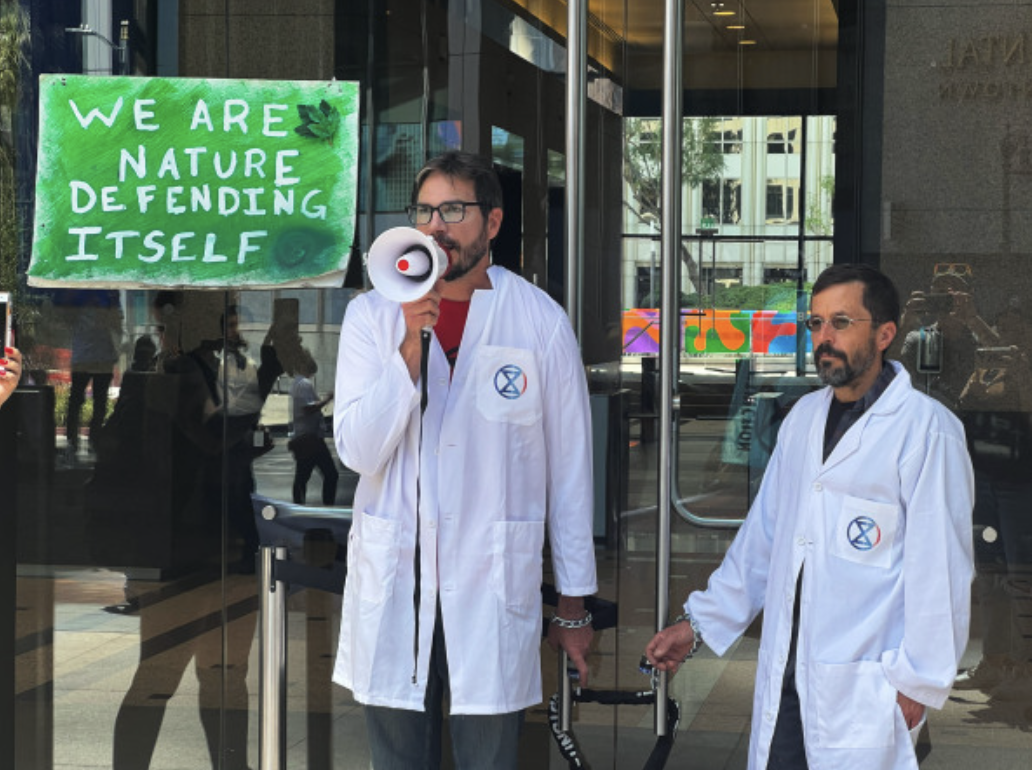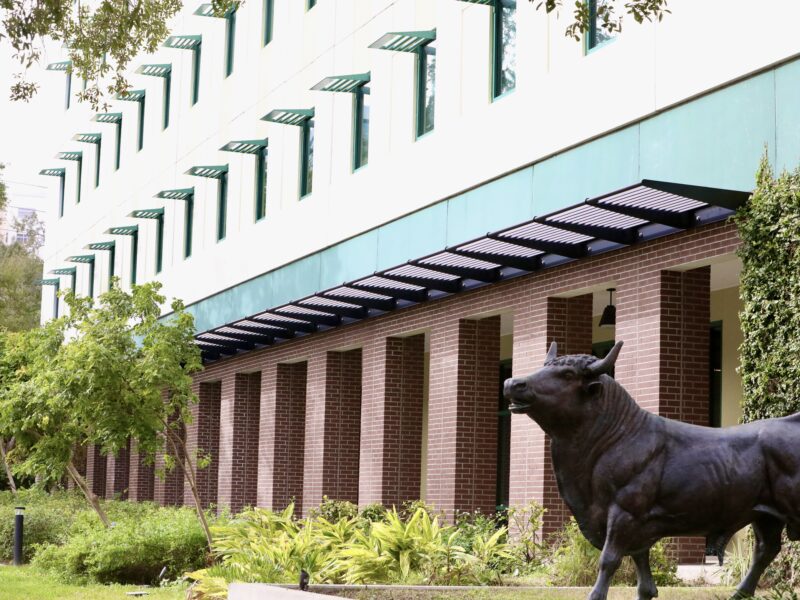Dr. Peter Kalmus protesting outside of a bank.
Courtesy of Brian Emerson on Fast Company
By Preston Kifer
Over the past few weeks, dozens of scientists across the world have been arrested for staging public protests against climate change.
Many of these scientists belong to a group known as the “Scientist Rebellion,” which is dedicated to bringing attention to climate change and its catastrophic consequences.
Two members in America chained themselves to JPMorgan & Chase buildings to prevent entry.
According to a report from the Rainforest Action Network (RAN), JPMorgan & Chase is the biggest bank contributor to climate change. The report also states that the company has “dumped over a quarter trillion dollars into fossil fuels in the last few years alone.”
NASA scientist Peter Kalmus was one of the many protestors who went viral across social media in a video of his emotional speech to the surrounding crowds.
“We’ve been trying to warn you guys for so many decades that we’re heading toward a catastrophe,” Kalmus said.
While Kalmus was chained to a building, demonstrators in over 25 different countries were protesting for the same cause.
In Spain, some were throwing red paint to resemble blood on government buildings, while others followed in the act of chaining.
The actions of Kalmus and the Scientist Rebellion beg the question of whether civil disobedience is the only way to create change.
Some argue that if we do not cause disruption to society then nothing will happen, but others argue that there are less violent ways to create change.
Personally, I am a believer in climate change, but I do not know if civil disruption is the answer. However, it seems that other motions to get the word out have fallen short.
Another point is that even though this was a major event across the world, it was barely covered by any major news stations, so perhaps this is not the way of change.
“I think civil disobedience is not the solution, but a call to action, it is only a demand to our policymakers,” Kevin Killeen, a freshman environmental science major, said.
Tucker Griner, a sophomore political science and philosophy major, said, “I think civil disobedience can be a powerful tool to illuminate issues and spark discussions.”
“However, with an issue so widespread as climate change where every single individual has an impact, civil disobedience will do little besides raising awareness against corporate actors that contribute to climate change. In that sense, civil disobedience only addresses one side of the issue of climate change,.” Griner said.
“I think it is the way to get the government to react to climate change because I think the government is not going to do anything without the masses making themselves heard,” Nora Wolfgang, a freshman criminology major at the Tampa campus, said. “The best way to do that is civil disobedience in my opinion. I don’t think it is the best solution, but I think it is the best way for the government to address it.”
After talking with multiple students, it would seem that civil disobedience may be a viable option in the eyes of the younger generations.
Perhaps, it is not an end, but a means to an end.




CO2 makes up only about 0.04%
https://news.climate.columbia.edu/2019/07/30/co2-drives-global-warming/
How that carbon got trapped under earth isn’t really worth debating here, but there’s lots of people who think it was due to a relatively recent worldwide flood (unrelated to an asteroid strike) and there’s a lot of people who think it was due to a much older asteroid strike which caused massive extinction, also causing a massive worldwide flood.
If there were much larger living things before the flood and they got trapped and their carbon naturally converted into vast energy stores, why wouldn’t mankind want to release those energy stores (fossil fuels), thus releasing massive amounts more stored energy into the atmosphere and as a result providing more resources for biological organisms to use? The more carbon released from long term subterranean fossilized storage the more for plant life to use to its advantage (possibility of accelerated growth), which then means there are more plant resources such as wood and fruits for mankind to harvest and use.
Cheers